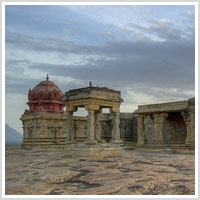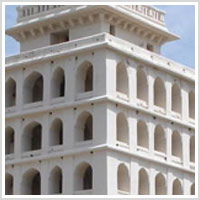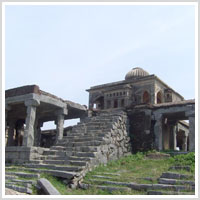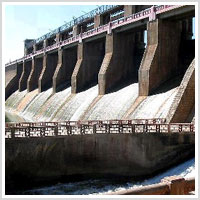
Chennai- Chenji Tour Package
 |
Gingee Fort |
|---|---|
Gingee Fort also known as Chenji or Jinji in Tamil Nadu, India is one of the few surviving forts in Tamil Nadu, India, which is more popular for its temples than forts. So well fortified was this place that Shivaji ranked it as the "most impregnable fortress in India" and it was called the "Troy of the East" by the British.
|
 |
Kalyana Mandapam |
|---|---|
A panorama of the Kalyana Mahal besides just right centre of the Gingee fort. The Kalyana Mahal, perhaps the living quarters of the queens. Also the Gingee For had an eight-storeyed Kalyana Mahal (marriage hall), granaries, prison cells, a military gymnasium and a temple dedicated to its presiding Hindu goddess called Chenjiamman. The fortifications contain a sacred pond known as Aanaikulam.
|
 |
Krishnagiri Fort |
|---|---|
Kapaleashwarar Temple is located in Mylapore, Chennai, Tamil Nadu. Nayanmars sing hymns in this temple. According to the Puranas, Shakthi worshipped Shiva, in the form of the Peacock, which is why the name Mylai was given to the area that developed around the temple, as 'Mayil' means Peacock in Tamil.The Pallavas kings built the temple around 7CE. The pallava Nayanamars built this temple.
|
 |
Krishnagiri Dam |
|---|---|
Krishnagiri Dam is a dam located 7 km from Krishnagiri in Tamil Nadu, India, between Dharmapuri and Krishnagiri which irrigates thousands of acres of land around Krishnagiri. Thousands of visitors visit Krishnagiri Dam each year. Majority come from Hosur/Bangalore or Chennai.
|
 |
Garden at the Krishnagiri Dam |
|---|---|
Krishnagiri Garden at the Krishnagiri dam in Krishnagiri District has a prehistoric importance. Archaeological sources confirm the presence of habitats of man kind during Paleolithic, Neolithic and Mesolithic Ages. Various rock paintings and rock carvings of Indus Valley civilization and Iron Age seen in this district support the historical significance of this district.
|



» Mumbai
» Rameswaram
» Kodaikanal
» Kanyakumari
» Munnar
» Palani
» Tiruchendur
» Madurai
» Kumarakom
» Athirapally
» Thekkady
» Ooty
» Bangalore
» Trichy
» Thanjavur
» Cochin
» Mysore


Home | Tours from Madurai | Special Packages | South Special | Tamil Nadu | Kumarakom | Munnar | Hyderabad | Goa | Book Tour | Contact
South India Packages
Copyright © 2010 Madurai Tours and Travels. All Rights Reserved
Website Design and Developed by Sri Hema Infotech
